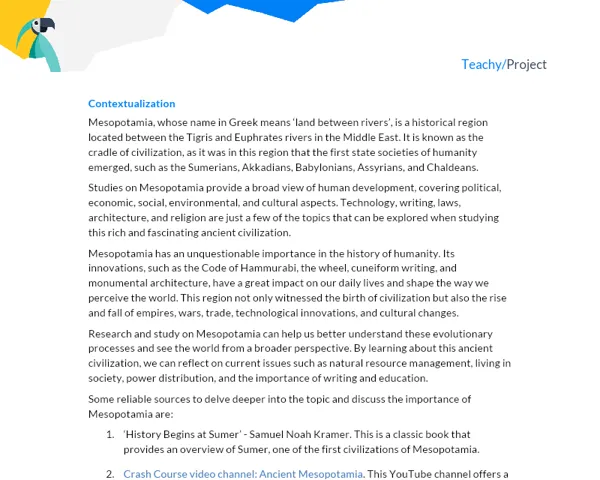Background
The history of humanity is one filled with encounters and clashes between different peoples, whose destinies intertwine at multiple moments, generating lasting impacts on their respective trajectories. In this complex web of interactions, the arrival of Europeans in America profoundly marked both the continent’s indigenous peoples and the newcomers, in a conjuncture of events that culminated in dramatic changes and profound consequences to the present day. In our project, we will delve into the diversity and richness of the Native American peoples, their traditions, knowledge, and beliefs, in order to better understand this decisive moment in human history.
The indigenous peoples of the Americas were diverse nations with unique traditions, beliefs, and knowledge, many of which endure in practices and knowledge to this day. From the complex agricultural systems of the Mesoamerican peoples to the zoological knowledge of the Amazonian forest peoples, the diversity and richness of these cultures is an invaluable treasure for humanity. Understanding these cultures is essential to understanding the history of humanity and its rich tapestry of experiences.
Importance
In today's globalized world, understanding the impact of contact between different cultures and how this contact has shaped society is critical to understanding the present and designing the future. As young students, you are at the center of these cultural forces, negotiating your identities and understanding your place in the world. By immersing yourselves in the history and cultures of the indigenous peoples of the Americas, you will have the opportunity to understand how similar situations shaped the society and world we live in today.
In addition, the history of the indigenous peoples of the Americas is one of resistance, survival, and resilience in the face of extreme change and adversity. By studying and understanding this history, students can find inspiration and important lessons for facing today's challenges.
Hands-on Activity
Project: "Recreating History: The Trail of the Native Peoples of America"
Project Objective
The main objective of this project is to provide an immersion in the culture of the indigenous peoples of the Americas. Students will be tasked with exploring the diversity of these civilizations, their contributions to and impacts on modern society, their ways of life, culture, technologies, and knowledge passed down through generations.
Project Description
-
Research: Each group will choose a specific indigenous civilization of the Americas (e.g., Incas, Mayans, Mapuches, Navajos, Tupi-Guarani, etc.). The research should cover aspects such as geographical location, social structure, cultural and religious beliefs, scientific and technological contributions, art and music, first contacts with Europeans, and the impact of this contact.
-
Multimedia Presentation: The group will create a multimedia presentation, which can be done using programs like PowerPoint, Prezi, Canva, etc. In this presentation, each group member should focus on a specific area (geography, social structure, beliefs, scientific contributions, etc.). The presentation should include images, videos, and/or audios that portray the civilization researched.
-
Concept Map: The group will develop a concept map that highlights the main components of their research. This map can be done manually or through online programs such as MindMeister, CmapTools, etc.
-
Cultural Artifact: Each group will create a piece that represents the culture of the people they chose. This could be a model of a dwelling, a piece of pottery, a utensil, a musical instrument, an adornment, or another piece that reflects the culture and technology of the civilization researched. The piece should be accompanied by a written description explaining its use, the material used in its construction, and the cultural significance it had for the people in question.
Necessary Materials
- Books, websites, and documentaries for research.
- Software for creating the multimedia presentation and the concept map.
- Various materials for making the cultural artifact (cardboard, clay, paint, fabric, etc.).
Step by Step
- Form a group of 3-5 students.
- Choose a Native American people for study.
- Divide the research tasks among the group members.
- Conduct the research and gather all necessary information.
- Make the cultural artifact.
- Prepare the multimedia presentation and the concept map.
- Compose a report covering all the researched and produced content.
Project Delivery
All the content researched and produced by the students should be delivered in the following format:
- Written Report: The report should include an introduction, development, conclusions, and bibliography used in the research.
- The Introduction should introduce the chosen Native American people, the importance of the study, the objective of the report, and a brief description of what will be covered.
- The Development should discuss the research carried out, explain the methodology used, detail the process of creating the cultural artifact, and present the concept map. In addition, it should include a discussion of the results obtained from the research and the elaboration of the cultural artifact.
- The Conclusion should restate the main points, explain the lessons learned, and present a reflection on the project.
- Finally, the Bibliography should cite all sources used to execute the project, whether books, videos, websites, etc.
- Multimedia presentation: Will be presented in the classroom.
- Cultural artifact: Will be displayed at a cultural fair at the school for other students to learn about.
It is expected that by the end of this project, students will have acquired a solid knowledge about the Native American peoples, as well as developed research skills, teamwork, time management, and creativity.


